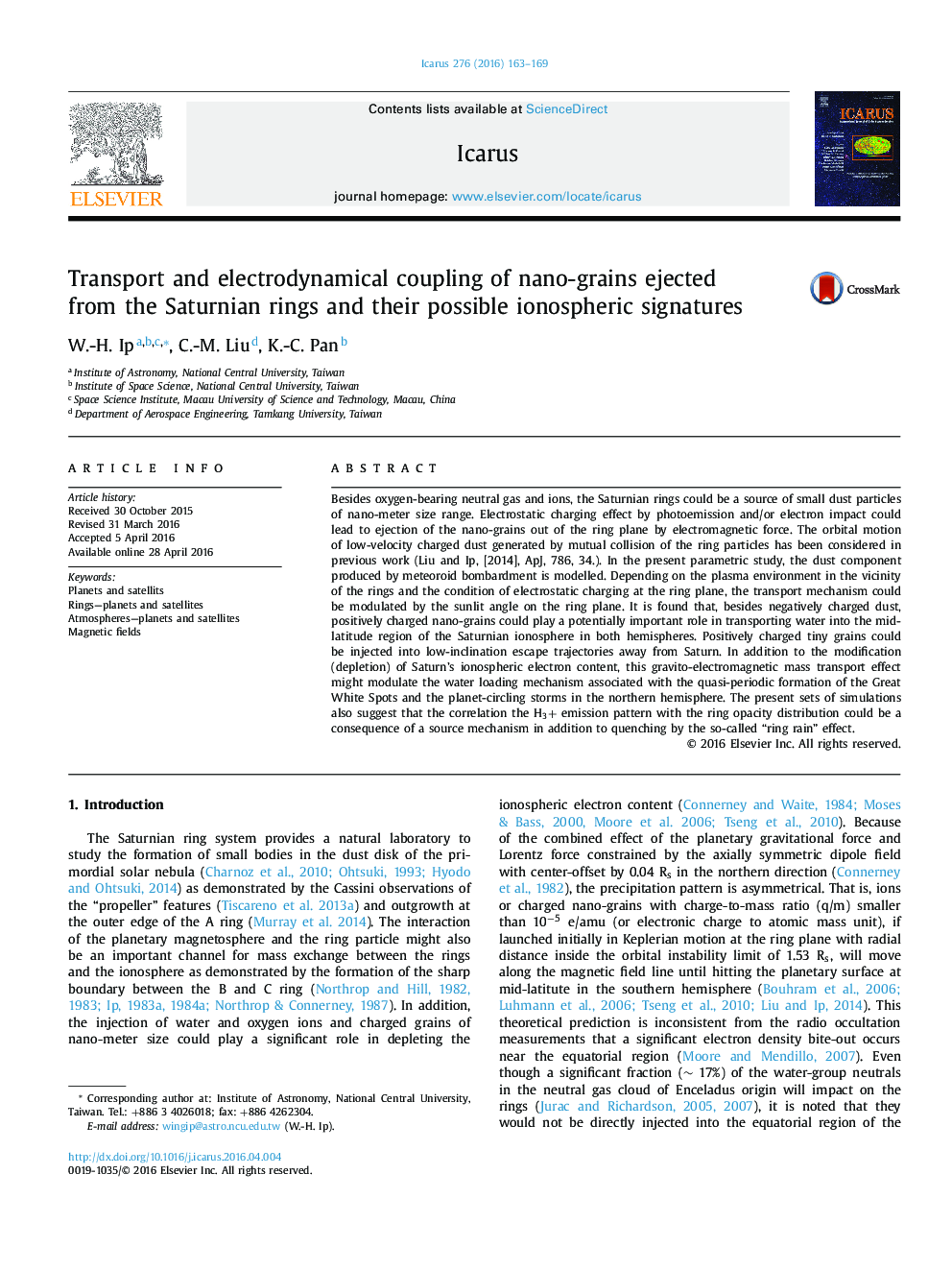| Article ID | Journal | Published Year | Pages | File Type |
|---|---|---|---|---|
| 1772915 | Icarus | 2016 | 7 Pages |
Abstract
Besides oxygen-bearing neutral gas and ions, the Saturnian rings could be a source of small dust particles of nano-meter size range. Electrostatic charging effect by photoemission and/or electron impact could lead to ejection of the nano-grains out of the ring plane by electromagnetic force. The orbital motion of low-velocity charged dust generated by mutual collision of the ring particles has been considered in previous work (Liu and Ip, [2014], ApJ, 786, 34.). In the present parametric study, the dust component produced by meteoroid bombardment is modelled. Depending on the plasma environment in the vicinity of the rings and the condition of electrostatic charging at the ring plane, the transport mechanism could be modulated by the sunlit angle on the ring plane. It is found that, besides negatively charged dust, positively charged nano-grains could play a potentially important role in transporting water into the mid-latitude region of the Saturnian ionosphere in both hemispheres. Positively charged tiny grains could be injected into low-inclination escape trajectories away from Saturn. In addition to the modification (depletion) of Saturn's ionospheric electron content, this gravito-electromagnetic mass transport effect might modulate the water loading mechanism associated with the quasi-periodic formation of the Great White Spots and the planet-circling storms in the northern hemisphere. The present sets of simulations also suggest that the correlation the H3+ emission pattern with the ring opacity distribution could be a consequence of a source mechanism in addition to quenching by the so-called “ring rain” effect.
Keywords
Related Topics
Physical Sciences and Engineering
Earth and Planetary Sciences
Space and Planetary Science
Authors
W.-H. Ip, C.-M. Liu, K.-C. Pan,
